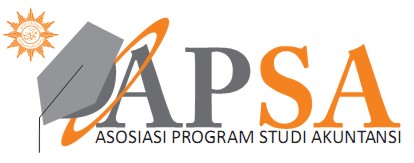Factors Affecting Capital Expenditure Allocation: Empirical Evidence from Regency/City Government in Indonesia
DOI:
https://doi.org/10.18196/jai.2102150Keywords:
Regional Taxes, Regional Retribution, Special Allocation Fund, Area, Capital Expenditures, Economic GrowthAbstract
Research aims: To analyze the effect of local taxes, regional retribution, special allocation fund, and area size on the allocation of capital expenditure with economic growth as a moderating variable in the regency/city Governments in Indonesia from 2016 to 2017.
Design/Methodology/Approach: This study used secondary data obtained through the website of the Ministry of Home Affairs, Ministry of Finance, and Audit Board of the Republic of Indonesia. Based on the purposive sampling method, a sample of 565 regencies/cities in Indonesia was obtained. The hypothesis testing in this study used Moderated Regression Analysis.
Research findings: Based on the results of the study, it could be concluded that partially the local tax variables, special allocation fund, and area had a positive and significant effect on capital expenditure allocation. In contrast, regional retribution variables did not affect capital expenditure allocation, and economic growth could moderate the effect of local tax on capital expenditure allocation, but unable to moderate the effect of regional regional on capital expenditure allocations.
Theoretical contribution/Originality: This research proved the theory of fiscal federalism in the relationship to fiscal decentralization, such as local taxes, economic conditions, public services, and public welfare. Moreover, this study enriched the literature on the application of the theory of stewardship in government agencies.
Practitioner/Policy implication: Regional governments in regencies/cities in Indonesia are expected to explore the potential of their regions better so that they can improve the steward function to the community.
Research limitation/Implication: The research period was relatively short; due to the availability of data only from 2016 to 2017, many research data were outliers. Future research is expected to renew the observation period and change the intervening model, as well as add other variables related to capital expenditure, such as General Allocation Funds (DAU), Revenue Sharing Funds (DBH), population numbers, Budget Surplus (SILPA) and others.
References
Alderfer, C. P. (1972). Existence, relatedness, and growth. Human needs in organizational settings. New York: US. Free Press.
Andrian, Y., & Samekto, A. (2017). Pengaruh Pendapatan Asli Daerah (PAD), Dana Alokasi Umum (DAU), dan Dana Alokasi Khusus (DAK) Terhadap Alokasi Belanja Modal Pada Kabupaten / Kota di Pulau Jawa. Journal of Accounting Research and Review, 10(2), 139–152. Retrieved from http://jurnal.unsyiah.ac.id/TRA/article/view/14018/10609
Ayem, S., & Pratama, D. (2018). Pengaruh Pertumbuhan Ekonomi, Dana Alokasi Umum, Dana Alokasi Khusus dan Pendapatan Asli Daerah Terhadap Belanja Modal di Provinsi Daerah Istimewa Yogyakarta Periode 2011-2016. Akuntansi Dewantara, 2(2), 169–182. http://dx.doi.org/10.26460/ad.v2i2.2987
Bodman, P., Heaton, K.A., & Hodge, A. (2009). Fiscal Decentralisation and Economic Growth: A Bayesian Model Averaging Approach. School of Economics, The University of Queensland, December, 1–10. Retrieved from http://www.uq.edu.au/economics/mrg/3509.pdf
Boediono. (2009). Teori Pertumbuhan Ekonomi. Edisi ketujuh. Yogyakarta: BPFE.
Christover, A. P., & Rondonuwu, S. (2016). Pemahaman Ekstensifikasi Wajib Pajak Dan Intensifikasi Pajak Terhadap Persepsi Fiskus Tentang Penerimaan Pajak. Jurnal EMBA, 4(1), 1241–1253. https://doi.org/10.35794/emba.v4i1.12294
Davis, J. H. (1997). Toward A Stewardship Theory Of Management. Academy of Management Review, 22(1), 20–47. https://doi.org/10.2307/259223
Felix, O. (2012). Analysis of the effectiveness of capital expenditure budgeting in the local government system of Ondo State, Nigeria. Journal of Accounting and Taxation, 4(1), 1-6. https://doi.org/10.5897/JAT11.038
Hairiyah, Malisan, L., & Fakhroni, Z. (2017). Pengaruh dana alokasi umum DAU dana alokasi khusus DAK dan pendapatan asli daerah PAD terhadap belanja modal, Journal FEB Unmul, 14(2), 85–91. http://dx.doi.org/10.29264/jkin.v14i2.2483
Handayani, S., Abdullah, S., & Fahlevi, H. (2015). Pengerauh Penerimaan Pajak Daerah, Retribusi Daerah dan Dana Bagi Hasil (DBH) terhadap belanja modal di Kabupaten/Kota Di Provinsi Aceh. Journal Magister Akuntansi Pascasarjana Universitas Syiah Kuala, 4(2), 45–50. Retrieved from http://www.jurnal.unsyiah.ac.id/JAA/article/view/4467/3846
Harefa, M., Permana, S. M., Mangeswuri, D. R., & Meilani. H. (2017). Optimalisasi Kebijakan Penerimaan Daerah (Kerjasama Yayasan Pustaka Obor Indonesia-Bidang Ekonomi dan Kebijakan Publik Pusat Penelitian Badan Keahlian DPR RI. Ed. 1, Cet. 1, Jakarta. Retrieved from https://berkas.dpr.go.id/puslit/files/buku_tim/buku-tim-public-77.pdf
Jaeni, G. A. L. (2016). Pertumbuhan Ekonomi Sebagai Variabel Pemoderasi Pendapatan Asli Daerah Dan Bantuan Provinsi Terhadap Belanja Modal. Dinamika Akuntansi, Keuangan dan Perbankan, 5(1), 13–26. Retrieved from https://www.unisbank.ac.id/ojs/index.php/fe9/article/view/5569/1693
Jaya, I. P., & Dwirandra, A. A. N. B. (2014). Pengaruh Pendapatan Asli Daerah Pada Belanja Modal dengan Pertumbuhan Ekonomi Sebagai Variabel Pemoderasi. E-Jurnal Akuntansi Universitas Udayana, 7(1), 79–92. Retrieved from https://ojs.unud.ac.id/index.php/Akuntansi/article/view/8643/6440
Juniawan, M. A., & Suryantini, N. P. S. (2018). Pengaruh Pad, Dau Dan Dak Terhadap Belanja Modal Kota Dan Kabupaten Di Provinsi Bali. E-Jurnal Manajemen Universitas Udayana, 7(3), 1255–1281. https://doi.org/10.24843/EJMUNUD.2018.v7.i03.p05
Kusnandar, & Siswantoro, D. (2009). Pengaruh Dana Alokasi Umum, Pendapatan Asli Daerah, Sisa Lebih Pembiayaan Anggaran dan Luas Wilayah terhadap Belanja Modal. Jurnal Universitas Indonesia, 1–20. Retrieved from https://scholar.google.co.id/citations?user=r3CdU2AAAAAJ&hl=en
Kusuma, H. (2016). Desentralisasi Fiskal dan Pertumbuhan Ekonomi di Indonesia. Jurnal Ekonomi Kuantitatif Terapan, 9(1), 1–11. https://doi.org/10.24843/JEKT.2016.v09.i01.p01
Lestari, S. A. P. (2015). Pengaruh Penerimaan Pajak Daerah terhadap Belanja Modal Daerah pada Pemerintahan Kota di Jawa Barat Tahun 2011-2013. E-Proceeding of Management, 2(3), 3383–3392. Retrieved from https://openlibrary.telkomuniversity.ac.id/pustaka/files/104615/jurnal_eproc/pengaruh-penerimaan-pajak-daerah-terhadap-belanja-modal-daerah-pada-pemerintahan-kota-di-jawa-barat-tahun-2011-2013.pdf
Lofgren, K., Macaulay, M., Berman, E., & Plimmer, G. (2017). Expectations, Trust, and 'No Surprises': Perceptions of Autonomy in New Zealand Crown Entities. Australian Journal of Public Administration, 77(4), 672–684. DOI:10.1111/1467-8500.12305
Malik, S., Ul-hassan, M., & Hussain, S. (2006). Fiscal Decentralization and Economic Growth in Pakistan. Department of Economics, Bahauddin Zakariya University, Multan, Pakistan. Retrieved from https://www.jstor.org/stable/41260655
Mamonto, S. Y., Kalangi, & D. Tolosang, K. (2015). Pengaruh Pajak Daerah dan Retribusi Daerah Terhadap Belanja Modal. Jurnal Berkala Ilmiah Efisiensi, 15(1), 1-14. Retrieved from https://ejournal.unsrat.ac.id/index.php/jbie/article/view/6377/5894
Meianto, E., Betri, & Wenny, C. D. (2014). Pengaruh Dana Alokasi Umum, Dana Alokasi Khusus, Pendapatan Asli Daerah, dan Luas Wilayah Terhadap Belanja Modal Pada Kabupaten/Kota Di Sumatera Selatan. STIE Multi Data Palembang, 1–13. Retrieved from http://eprints.mdp.ac.id/1472/1/Jurnal%20Edy%20Meianto%202011210030.pdf
Nugraha, I. P., & Dwirandra, A. A. N.B . (2016). Kemampuan Pertumbuhan Ekonomi Memoderasi Pengaruh Pajak Daerah, Retribusi Daerah, DAU dan DBH pada Belanja Modal. E-Jurnal Akuntansi Universitas Udayana, 14(1), 284–311. Retrieved from https://ojs.unud.ac.id/index.php/Akuntansi/article/view/14408/11843
Nurhidayati, L. L., & Yaya, R. (2013). Alokasi belanja modal untuk pelayanan publik: praktik di pemerintah daerah. Jurnal Akuntansi & Auditing Indonesia, 17(2), 102–114. https://doi.org/10.20885/jaai.vol17.iss2.art2
Nuryadin, D., & Suharsih, S. (2017). Analisis dan Evaluasi Dampak Dana Alokasi Khusus terhadap Indikator Kinerja Pembangunan di Daerah, Studi Kasus Kabupaten-Kota 2003/2013. Jurnal Ekonomi Dan Studi Pembangunan, 18(1), 62–70. https://doi.org/10.18196/jesp.18.1.3954
Oates, Wallace, E. (1999). An Essay on Fiscal Federalism. Journal of Economic Literature, 37(3), 1120-1149. Retrieved from https://www.jstor.org/stable/i344067
Peraturan Direktur Jenderal Perbendaharaan. Nomor Per- 33 /pb/2008 Tentang Pedoman Penggunaan Akun Pendapatan, Belanja Pegawai, Belanja Barang, Dan Belanja Modal.
Peraturan Menteri Dalam Negeri No.13 Tahun 2006 tentang Pedoman Pengelolaan Keuangan Daerah.
Peraturan Menteri Keuangan Nomor 101/PMK.02/2011 Tentang Klasifikasi Anggaran.
Peraturan Mentri Dalam Negeri No.37/2012 Tentang Pedoman Penyusunan Anggaran Pendapatan dan Belanja Daerah Tahun Anggaran 2012
Peraturan Pemerintah Republik Indonesia Nomor 47 Tahun 1997 Tentang Rencana Tata Ruang Wilayah Nasional.
Peraturan Pemerintah Republik Indonesia Nomor 55 Tahun 2005 Tentang Dana Perimbangan.
Peraturan Pemerintah Republik Indonesia Nomor 71 Tahun 2010 Tentang Standar Akuntansi Pemerintahan.
Pratama, R. (2017). Pengaruh Pendapatan Asli Daerah, Dana Alokasi Umum, Dana Alokasi Khusus Terhadap Alokasi Belanja Modal dengan Pertumbuhan Ekonomi Sebagai Variabel Moderasi. JOM Fekon, 4(1), 2677–2689. Retrieved from https://jom.unri.ac.id/index.php/JOMFEKON/article/view/19502/18849
Putra, F. (2017). Pengaruh desentralisasi fiskal, luas wilayah, dan sisa lebih pembiayaaan anggaran terhadap pengalokasian belanja modal. Article Universitas Negeri Padang, 1–25. Retrieved from http://ejournal.unp.ac.id/students/index.php/akt/article/view/2418/1927
Rahmawati, R., & Tjahjono, A. (2018). Pengaruh Pajak Daerah, Retribusi Daerah, Dana Alokasi Umum, Dan Dana Alokasi Khusus Terhadap Belanja Modal Di D.I Yogyakarta Tahun 2012 - 2016. Jurnal Kajian Bisnis, 26(2), 195–209. Retrieved from http://jurnal.stieww.ac.id/index.php/jkb/article/view/124/106
Ramlan, Abdullah, S., & Darwanis. (2016). Pengaruh Pajak Daerah, Retribusi Daerah, Lain-Lain Pendapatan Asli Daerah yang Sah, dan Dana Alokasi Khusus terhadap Belanja Modal. Jurnal Magister Akuntansi, 5(2), 79–88. Retrieved from http://www.jurnal.unsyiah.ac.id/JAA/article/view/4512/3888
Risty, N. N. (2014). Pengaruh Ukuran Perusahaan, Aktiva Tetap, dan Future Abnormal Earnings Terhadap Kebijakan Utang. Jurnal Telaah & Riset Akuntansi, 7(1), 22-28. Retrieved from http://jurnal.unsyiah.ac.id/TRA/article/view/10131/8003.
Sari, I., & Supadmi, N. L. (2016). Pengaruh Pendapatan Asli Daerah dan Belanja Modal pada Peningkatan Indeks Pembangunan Manusia. E-Jurnal Akuntansi Universitas Udayana, 15(3), 2409–2438. Retrieved from https://ojs.unud.ac.id/index.php/Akuntansi/article/view/16283/13972
Sholikah, I., & Wahyudin, A. (2014). Analisis Belanja Modal pada Pemerintah Kabupaten/Kota di Jawa. Accounting Analysis Journal, 3(4), 553–562. https://doi.org/10.15294/aaj.v3i4.4224
Sudika, I., & Budiartha, I. K. (2017). Pengaruh Pajak Daerah, Retribusi Daerah, Dana Alokasi Umum, dan Dana Alokasi Khusus Pada Belanja Modal Provinsi Bali. E-Jurnal Akuntansi Universitas Udayana, 21(2), 1689–1718. https://doi.org/10.24843/EJA.2017.v21.i02.p30
Sukirno, S. (2011). Makro Ekonomi Teori Pengantar Edisi Ketiga. Jakarta: Rajawali Pers.
Suparmoko. (2002). Ekonomi Publik (Untuk Keuangan dan Pembangunan Daerah), Yogyakarta: Penerbit Andi.
Undang-Undang Republik Indonesia Nomor 28 Tahun 2009 Tentang Pajak Daerah dan Retribusi Daerah.
Undang-Undang Republik Indonesia Nomor 32 Tahun 2004 Tentang Pemerintahan Daerah.
Undang-Undang Republik Indonesia Nomor 33 Tahun 2004 Tentang Perimbangan Keuangan antara Pemerintah Pusat dan Pemerintahan Daerah.
Undang-Undang Republik Indonesia Nomor 34 Tahun 2000 Tentang Perubahan atas Undang-Undang Republik Indonesia Nomor 18 Tahun 1997 Tentang Pajak Daerah dan Retribusi Daerah.
Vosselman, E. (2016). Accounting, Accountability, and Ethics in Public Sector Organizations. Administration & Society, 48(5),602-627. https://doi.org/10.1177/0095399713514844.
Wibisono, N., & Wildaniati, A. (2016). Pengaruh Pertumbuhan Ekonomi, PAD, DAU, SiLPA dan Luas Wilayah Terhadap Alokasi Anggaran Belanja Modal. Journal Ekomaks, 5(2), 11–20. Retrieved from http://unmermadiun.ac.id/ejurnal/index.php/ekomaks/article/view/212/412
Widiasmara, A. (2019). Pengaruh Pendapatan Asli Daerah, Dana Alokasi Khusus, Dana Alokasi Umum, Total Aset dan Luas Wilayah, terhadap Belanja Modal dengan Pertumbuhan Ekonomi sebagai Variabel Moderating. Journal of Islamic Finance and Accounting, 2(1), 45–56. https://doi.org/10.22515/jifa.v2i1.1594
Yudiaatmaja, F., Suwendra, W., & Sukmawati, R. (2016). Pengaruh Pendapatan Asli Daerah Dan Sisa Lebih Pembiayaan Anggaran Terhadap Belanja Modal Pada Pemerintah Daerah Kabupaten Buleleng. E-Journal Bisma Universitas Pendidikan Ganesha, 4, 1–9. Retrieved from https://ejournal.undiksha.ac.id/index.php/JMI/article/viewFile/6680/4541
Downloads
Published
How to Cite
Issue
Section
License
License
 Journal of Accounting and Investment is licensed under Creative Commons Attribution Attribution-NonCommercial-NoDerivatives 4.0 International License.
Journal of Accounting and Investment is licensed under Creative Commons Attribution Attribution-NonCommercial-NoDerivatives 4.0 International License.




